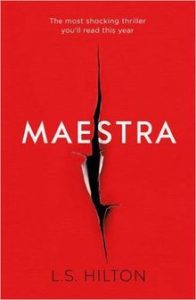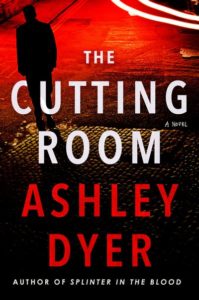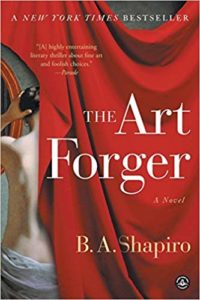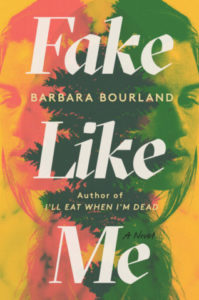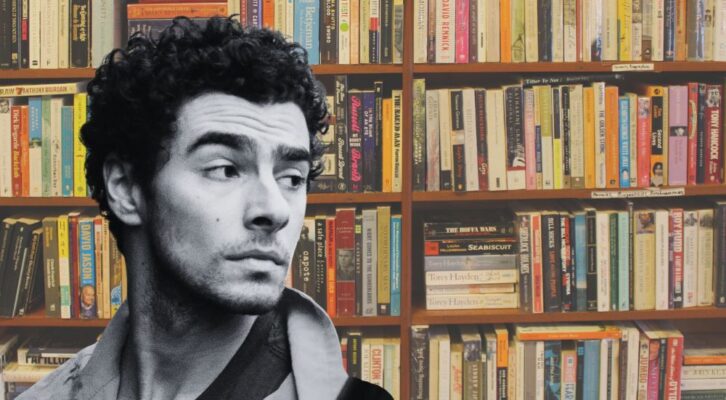Ah, the art world. The phrase conjures up beautiful and expensive objects and their beautiful and rich owners wearing black and going to wine-soaked openings and fancy museum galas. Crime writers have used it as a backdrop to great effect, as the covetousness of both artists and collectors propels people into doing nefarious things, forgery foremost among them. There is also the pressing question of what constitutes art, who is an artist, and how to gauge the authenticity of both the artist and the work.
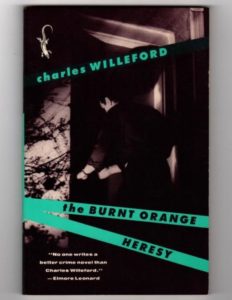
Charles Willeford, The Burnt Orange Heresy (Vintage/Black Lizard)
Willeford’s classic 1971 neo-noir follows the exploits of unscrupulous art critic Jacques Figueras, a man who will stoop to stupendous depths to further his career (blackmail, burglary, and even murder are among the tricks of his trade). Impress your friends and read it now before the movie starring Mick Jagger (!) comes out next year.
Maria Hummel, Still Lives (Counterpoint)
Kim Lord is an art world rock star, widely admired for her provocative work. In her new exhibition, Still Lives, Lord channels her inner Cindy Sherman and portrays herself as famous female murder victims—the Black Dahlia, Nicole Brown Simpson, et al. When Lord fails to show up at the gala opening of Still Lives at the Rocque Museum in Los Angeles, editor Maggie Richter launches an investigation as to where Lord is and why she failed to show up at the most important event of her career. Suspicion falls on Maggie’s ex, a gallerist named Greg Shaw Ferguson, but there are plenty of other people who wouldn’t mind if Lord disappeared.
Lauren Beukes, Broken Monsters (Mullholland)
South African writer Beukes does a remarkable job of creating the gritty art underground of Detroit in this social media savvy novel. Someone is staging tableaus of crime scenes, and down on his luck journalist Jonno is desperate to turn these horrifying scenes into a viral YouTube series. Detective Gabriella Versado is trying to figure out who is creating the scenes, while her teenage daughter is getting dangerously involved with an online predator. Whether crime can function as art is Beukes’s primary concern in this novel with a scary “this could totally happen” feel.
LS Hilton, Maestra (Putnam), Domina (Putnam), and Ultima (Zaffre)
The protagonist of Hilton’s trilogy, Judith Rashleigh, is perfectly styled, overeducated, and underpaid. She works as an assistant in a prestigious London auction house, researching provenances and answering to her anxious superiors who are all terrified of the art collectors. Oh, and Rashleigh has some unusual ways of having a good time. Because of a secret heist she discovered in Maestra Rashleigh is on the run in Domina, starting a small gallery in Italy under an assumed name and tangling with some nasty Russian oligarchs (are there any benign Russian oligarchs?). I am dying to read Ultima, which hasn’t been published in the US yet. Hilton is a keen observer of the Euro rich in their natural habitats (Paris, Capri, Positano, et al) and writes vividly about the power of art to inspire and transform us.
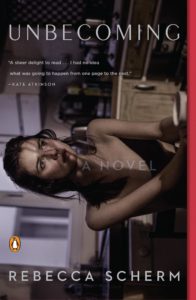
Rebecca Scherm, Unbecoming (Penguin)
This Edgar-nominated first novel reveals its true core to the reader slowly and skillfully. When we first meet Grace she’s working for a less than upstanding dealer in high-value tchotchkes. Grace is very good at her job, but she doesn’t care about it. We know she’s running from something or someone, since she’s calling herself Julie and keeping everyone at an almost rude distance. Scenes from her current life are woven into her past as an all-American small-town girl who did an unforgivable thing that sent two men to jail. One of them has just been paroled and he’s looking for her, causing upheaval in her carefully ordered fake life.
Ashley Dyer, The Cutting Room (Morrow)
Cutting Room is the second outing for the writing duo known as Ashley Dyer and the second book to feature Detectives Ruth Lake and Greg Carver. Dyer is partial to writing about serial killers with ingenious methods of both murder and manipulation of the media. In Cutting the serial killer, known as the Ferryman, has staged his murders down to the last detail, and is quickly rewarded for circulating photos of them by gaining a massive Instagram following (yes, between goat memes and vacation photos you could have a chilling crime scene in your feed). As the Ferryman becomes Britain’s true crime sensation, Carver and Lake try to use his social media footprint to stop him.
B.A. Shapiro, The Art Forger (Algonquin)
Claire Ross is a struggling artist in Boston who makes a desperate pact with an art dealer: she will paint a forgery of a Degas stolen 25 years ago in a heist in exchange for a solo show at the dealer’s gallery. Yet as Ross delves into an obsessive study of the Degas in her mission to duplicate it perfectly, she begins to question if the Degas is a forgery.
Barbara Bouland, Fake Like Me (Grand Central Publishing)
Bouland’s terrific new novel engages with the quandary of what makes a work of art authentic. A no name painter (literally, she has no name) has been working for years on seven billboard sized paintings for her first solo show. When her illegal Manhattan loft burns down, she faces the formidable task of recreating the paintings somehow in three months. With nowhere to live and a lot of work to do, she lucks into a residency at Pine City in upstate New York. But the Pine City artists intimidate her, and she quickly becomes haunted by one of the group who committed suicide, the wild and wildly talented Carey Logan, whose studio she’s now using.




